Hints for mould identification
Identify the affected areas
What is mould?
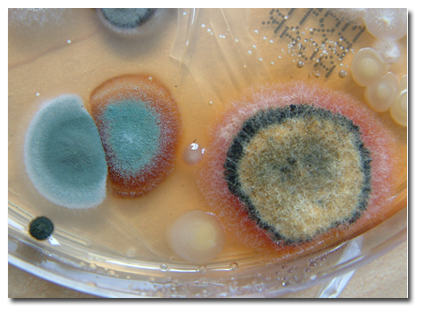 Mould is a type of fungi that live on plant and animal matter sending tiny roots into the surface upon which it grows. It grows on most surfaces and is often associated with damp, musty smells and is generally found everywhere, including bathrooms, basements, bedrooms and storerooms to name a few. Mould travels through the air as tiny spores which like to make their home in moist areas, where they will breed. If mould is spotted, it's best to nip it in the bud immediately to avoid it spreading to other areas. It's also a good indication of a moisture problem, which should be dealt with as soon as possible.
Mould is a type of fungi that live on plant and animal matter sending tiny roots into the surface upon which it grows. It grows on most surfaces and is often associated with damp, musty smells and is generally found everywhere, including bathrooms, basements, bedrooms and storerooms to name a few. Mould travels through the air as tiny spores which like to make their home in moist areas, where they will breed. If mould is spotted, it's best to nip it in the bud immediately to avoid it spreading to other areas. It's also a good indication of a moisture problem, which should be dealt with as soon as possible.
Mould spores are everywhere all the time, entering from the outdoor air as well as on pets and clothing.
A mould spore landing on an indoor surface is likely to be insignificant and amount to little more than a common component of indoor dust until such a mould spore lands on an organic surface, and with the indoor humidity rising above 60%, the moisture level on the surface on which the mould spore rests becomes sufficiently high.
Since a mould spore requires moisture to propagate and grow (just like a plant), the indoor humidity level is a major factor in the control of indoor mould and dust mites in your home.
If Humidity (food source) is high (>60%RH), within 48 hours, mould can reproduce itself thousands of times.
There are two things and two things only that moulds need to grow.
They are;
- food (organic surfaces)
- and moisture.
There are moulds that specialise in eating just about every possible type of organic material.
The most commonly found moulds indoors are Aspergillus, Alternaria, Cladosporium, and Penicillium.
When provided with suitable food (e.g a ceiling tile or some drywall) and moisture in the form of very high humidity, condensation, or water from a leaking pipe, these generate fungi and will gladly set up housekeeping and begin to grow.
Use your eyes and nose to find moulds in the home. If you can smell a mouldy, musty, or earthy odour; mould is present and needs to be dealt with.
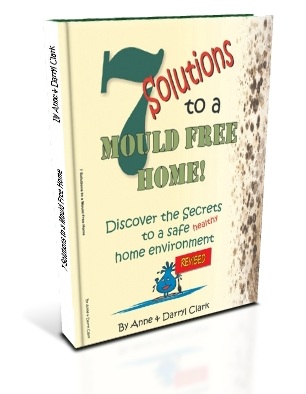 More information can be found in "7 Solutions to a Mould Free Home" Ebook available ",
More information can be found in "7 Solutions to a Mould Free Home" Ebook available ",
Remember: Prevention is always better than a Cure, don't wait for the problem to occur... prevent it happening!
How to prevent and treat mould.
1. Sort the clutter - Check rooms, cupboards and wardrobes and dispose of items no longer required
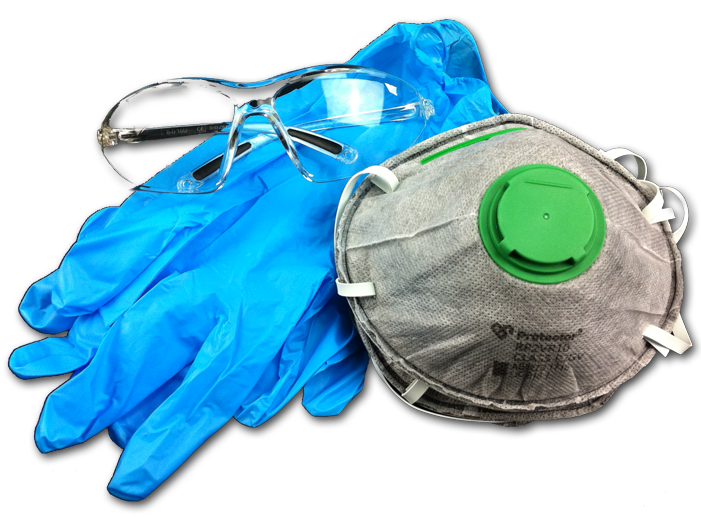 2. Protection - Use protective equipment ie: A face mask, rubber gloves and goggles included in our kit 1
2. Protection - Use protective equipment ie: A face mask, rubber gloves and goggles included in our kit 1
 Non-toxic Mould Killer sprays
Non-toxic Mould Killer sprays
- Use our Vanilla Fresh and Safe Air sprays and Treat Mould affected areas
- Use our Non-toxic Mould Killer sprays
NOTE: Bleach does not kill mould - It bleaches the black spots but it does not kill the deep mould.
How to prevent and maintain a mould free home
- Dry the area
- Ensure surfaces are kept dry by wiping condensation and moisture beads from walls window frames and floors
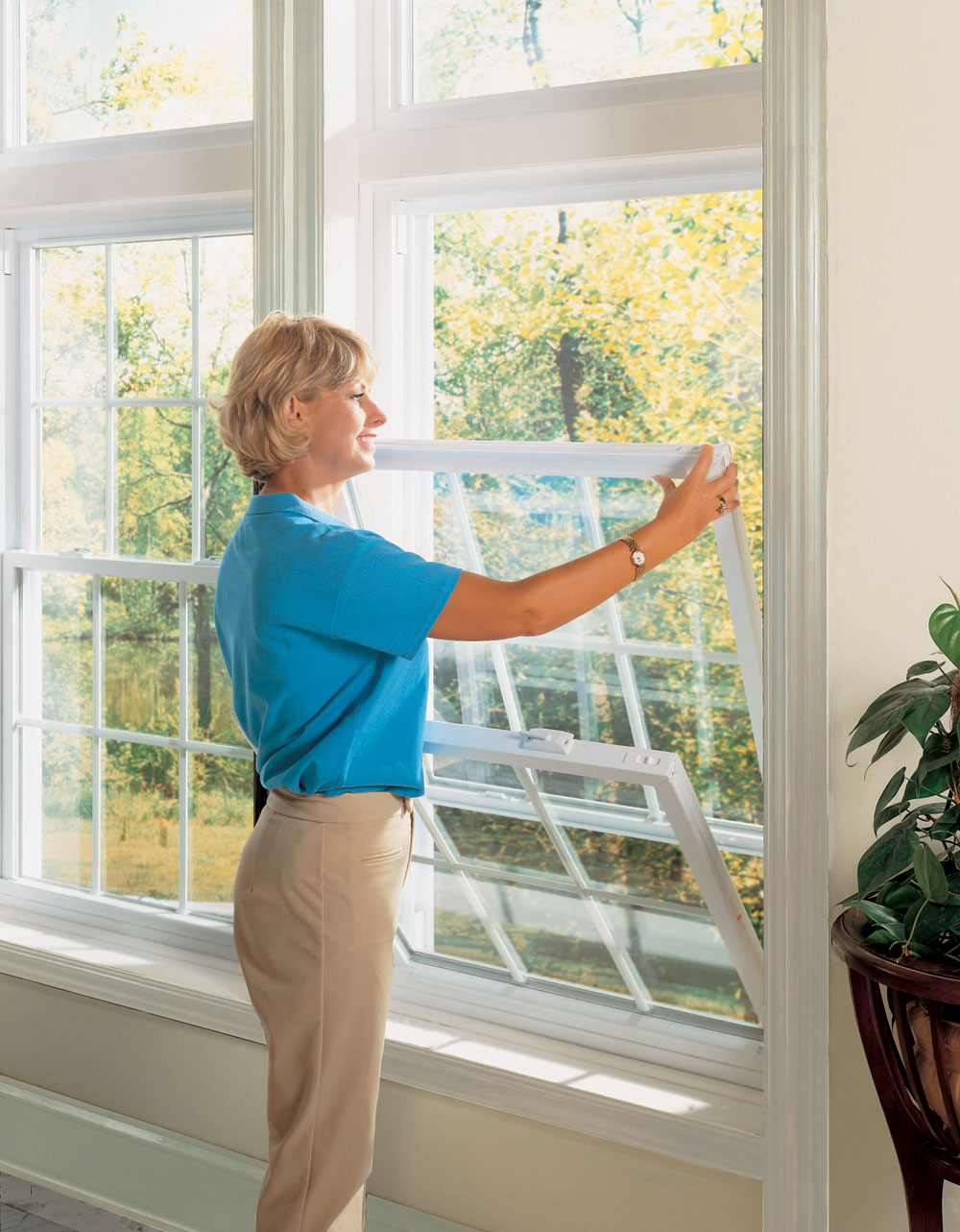 Mould will not grow if wet areas and items are dried within 24 - 48 hours (removes the food source)
Mould will not grow if wet areas and items are dried within 24 - 48 hours (removes the food source)- A Dehumidifier will reduce humidity to a safe mould free level.
- Fans can be used to accelerate the process and move the dry air around.
- Close windows when it rains, because it is crucial to keeping mould under control by preventing atomised air from entering the room.
- When the rain clears, reopen the windows to encourage ventilation.
- Purify the air - An Air Purifier is helpful in removing mould spores from the air.
- Minimise the carpeted areas as they are a potential storehouse for various moulds.
Points to Consider When Building Your Home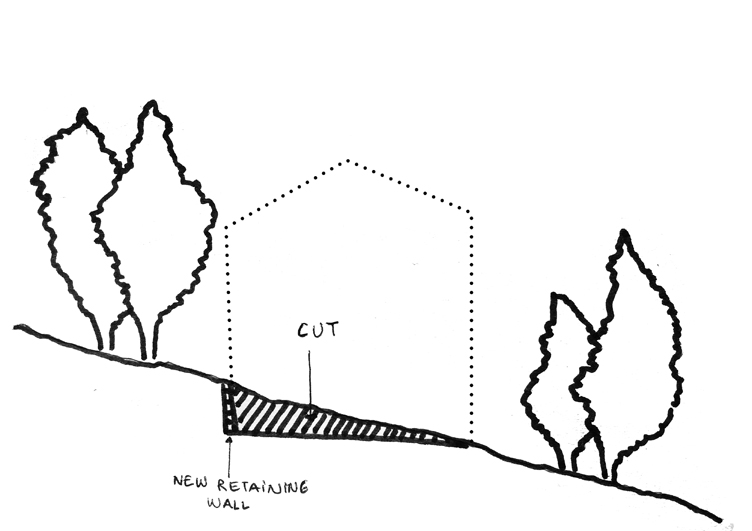
To reduce dampness, avoid building your house below ground level
In high rainfall areas, avoid cutting into the slope, if it is necessary to cut into land then use a swale or large spoon drain to redirect water away from the home.
Remove trees close to the house that block sunlight from walls and windows.
Enable good ventilation under your home in subfloor areas. A well placed sealed concrete slab is also ideal.
Maintain the environment with Yearly or 6 Monthly Air treatment and wall wash
- Ventilate your living rooms effectively
- Install a suitably sized room dehumidifier(s)
- Use our cupboard and wardrobe products such as Dampp® Chaser rods
Speak to one of our professional consultants who can guide you through the process.
Some typical FAQs
CONDENSATION - What are the usual causes in the home?
The most common causes of condensation moisture or dampness to occur in the home are:
- Poor ventilation in the bathroom & laundry, unvented or poorly installed exhaust fans that vent into the roof cavity causing an excess build up steam and moisture.
- Environment - Living in an area with high seasonal rainfall and humidity levels.
- In winter, a drop in outdoor temperature causes condensation and dampness to form on interior walls, windows, tiled floors etc. Especially when indoor un-flued gas heaters are turned on. Causing an excess of moisture as a by-product of heating gas being burnt.
- Dew point is reached when warm moist air meets a cold surface such as walls, glass or tiled floors, condensation is the result.
- Other major causes of excess moisture in homes are leaking pipes, damaged roofing and poor underfloor ventilation.
What are some of the ways you can combat condensation and dampness?
- Using a high airflow bathroom or laundry ceiling fan Kit that is ducted to the outside of the home and not into the roof space.
- Pedestal or floor fans used in conjunction with a suitably sized dehumidifier creates better air movement for the dehumidifier to collect the moisture and create extra warm whilst drying the air.
- Portable Room-sized Condensation Fighter Dehumidifiers
- A great way to solve the damp and musty feel in homes or storage rooms is to install a suitably sized room dehumidifier. ie 8-12L suit single bedrooms - 14-20Lmodels suits 1- 2 rooms -22-30L 2-3 rooms.
- Typically the popular European models using just 250-300Watt such as 20L shown on the right >>>
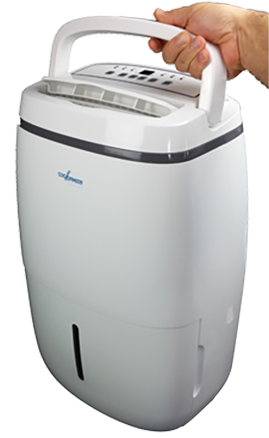
What is a Dehumidifier? & How do They work?
- Dehumidifiers are devices that filter the moist air particles or humidity from the air, condensing the moisture into a container inside the dehumidifier unit, which fills up to a float level that switches off the unit when full.
- They range in domestic capacity from small 12L/day to a massive 100L/day portable commercial dehumidifier, suitable for large open plan warehouses, underfloor storage rooms or several rooms up to 1000sqM.
- They work well in combination with an air conditioner and are low power and energy-efficient devices requiring just 30W-1000W to operate depending on the size of the dehumidifier.
- They are also great for drying clothes in the laundry, stops clothes shrinking uses 1/5th-1/10 of the power that clothes drier or A/C unit would use.
- Very economical to run.

The Dampp® Chaser or storage low heater rods Dampp® Chaser rods are excellent for closets and wardrobes. Where you can safely set and forget them, they warm the air creating air circulation and a dry barrier for preventing moisture build-up in enclosed small spaces.
They come in 3 sizes 45cm-61cm-91cm, are used in enclosed cupboards, wardrobes, video or photographic cabinets and create a controlled safe low heat, a warm barrier which rises through the area creating warm air movement, drying all objects in its path.
How much do the Dehumidifier devices cost?
Dampp® Chaser cupboard rods range in price from $85-$105.
The short answer is that it depends on the size of the room and what you are storing in or using the room for.
The Compact CB12L is a great way to keep small walk-in wardrobes or boats dry. They are easy to use and priced at $395
Prices for cupboard and wardrobe dehumidifiers range from $95-$125 up to $1350 for the larger 28L/day SeccoProf models Home Office dehumidifier models.
For larger Commercial Model dehumidifiers range from 38L/day - to a massive 130L/day, starting at $1550 with great 2-5 yr warranties.
Are there any other measures a homeowner can take to combat dampness?
Simple measures to help reduce dampness in your home are:
- Install dehumidifiers in damp problem areas, install Dampp Chasers in wardrobes and under-sink areas.
- Install high airflow ceiling exhaust fans ducted to the outside of the home (not into roof space) in bathrooms and laundry
- Check for poor underfloor ventilation ie musty and mouldy stale air, rooms above may have mould problems and install specially designed low power underfloor ventilation fans.
- Install a simple temp/humidity meter that measures the humidity in the air. Over 60-65%RH causes mould to form. This warns you when you need to start up your dehumidifier.
- Close windows around the home on rainy days and put the fans on. Open up on Dry sunny days.
- Contact a well-known dehumidifier specialist such as Damp Solutions Australia
Are there any cases where dampness cannot be solved, and where an entire renovation is required?
Extreme cases of moisture occurring in homes usually arise when homes are built into hills and moisture seeps under the home without ventilation. This is usually solved by correct engineering of a home in its planning stages. 90% of cases can be solved or alleviated by using devices mentioned above or by consulting a climate control or dehumidifier specialist.
Hints on ventilation
Helping you to prevent and combat mould issues and creating clean, fresh air in your home, office or building.
We all want fresh mould free air to breath and the best way to do that is to install the right type of ventilation system.
Here are our hints and tips to help you choose the right ventilation system.
Types of Ventilation Systems
When it comes to ventilation, there are several types that you can choose from. Some of the most popular include:
Exhaust fans
Bathroom Ceiling or wall exhaust
- EcoFan Underfloor ventilation System
These can be ceiling wall or underfloor mounted, are designed to draw moist or stale air through a fan and using a 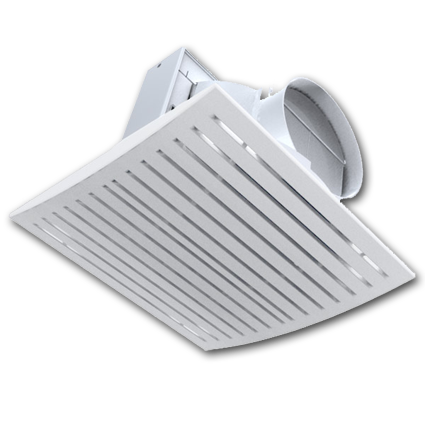 suitably sized duct hose, vent it to the outside of your building. They are particularly popular for use in kitchens, bathrooms, laundries, and are now being used for underfloor moisture problems as they can remove moisture from the air as well as odours and stale air.
suitably sized duct hose, vent it to the outside of your building. They are particularly popular for use in kitchens, bathrooms, laundries, and are now being used for underfloor moisture problems as they can remove moisture from the air as well as odours and stale air.
Rangehoods
Range hoods are used in the kitchen to vent away smells, greasy air, cooking odours, steam etc. They are mounted over the stovetop and vent to outside usually filtering the air before sending it outside.
Simply opening a Window 
Perhaps the simplest type of ventilation, this just means opening the window at the right time, when there is no rain, (as you don't want moist atomised air to enter) in the desired room to let fresh air come in!
By opening windows opposite each other (cross ventilation), you can get fresh air in and flush out stale, old air at the same time.
Solar Ventilation
Relatively new in Australia, the concept uses solar energy to operate high-efficiency exhaust fans mounted on the roof or a fan that operates using the suns rays to power a fan that draws in fresh cool dry air then filters it before delivering the air into the home.
Filtration removes contaminants and mould spores. Great for children's rooms and asthma sufferers.
When choosing your ventilation system, you need to ask a few questions of the suppliers to be able to get the required system needed for your home office or building.
Identify the problem areas in the building that need extra ventilation.
- What do you want from the system?
- Is stale air an issue in wardrobes and cupboards?
- Is musty mould smells coming from the underfloor or basement area?
- Do you simply need fresh dry air coming into the living rooms or bedrooms?
- Do you need to remove musty mould smells and odours?
Dehumidifier Operation
Systems can be simply operated by the flick of a switch or can be set up with sensors to operate automatically when humidity is high.
Work out your budget and build on the system over time.
Costs will depend on the complexity of the system but there are simple methods and DIY kits available that don't require thousands of dollars.
Click to see our products >>> Damp Solutions for some ideas and DIY systems